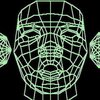Review Videos
"MeinElektronikHobby" (in German):
AmstradNoob:
Development History:
Part 14:
By now, the BIN MID file player is also able to use the 512 KB memory expansion (DK'tronics "standard"). The Python-based converter has been improved a bit; timing is much better by now. Here is a line out-recording of the card with he X2GS. Enjoy!
Part 13:
Previously, to generate song files for the card, I had to record the MIDI events generated by playing back a MIDI song in realtime into the CPC. MID playback was done with the PC and MIDIBAR, and the CPC recorded the messages arriving with a USB->MIDI cable in the card's MIDI IN DIN port. Now, depending on the complexity of the MIDI data stream this can be very close to the limit of what the card / CPC can process (some .MID's require CRAZY bandwidth...) Whereas this works mostly fine for MIDI songs of medium complexity (whatever that means - e.g., all the song fragments demonstrated in Part 12 were created in that way), this "realtime MIDI message recording into the CPC"-approach is not feasible for very complex MIDI songs.
Hence, I created a Python-based .MID to .BIN converter which allows me to generate song content for the card much more readily and conveniently by now (with the push of a button). Also, since these BIN song files get very large, we need to use the CPC's extended RAM. The CPC 6128 already offers 128 KBs, and I simply set aside the second 64 KB bank exclusively for MIDI data. Here is a video of the first songs created by the Python-converter, utilizing the extended memory - AxelF and MammaGamma unabridged!
The Python converter still needs a bit of work, but I am going to release it on the Github repo soon.
Next, I am also going to support the standard DK'tronics 512 KB memory extension for the CPC, which is a modern and wel-supported "CPC standard" (e.g., ToTO's XMem and Revaldinho's RAM extensions are all DK'tronics compatible).
Part 12:
I have a new favorite sound module for the Ultimate MIDI Card - the X2 GS! It really sounds as good as my Roland Sound Canvas. The GS certified Roland MIDI sound bank makes all the difference in terms of sound quality. Whereas I was a bit disappointed by the X2, the X2 GS exceeded my expectations! Really an amazing sound module. Hence, I recommend the S2 for the price sensitive customer, and the X2 GS as the audiophile no-compromise-MIDI solution. Listen to the X2 GS here; this is a line-out recording. Sound starts at 2'10:
Part 11:
Thanks to PCBWay for sponsoring this project by giving me a free batch of PCBs!

They are thick and sturdy and I can recommend them. I am making this endorsement as an individual, and it should not be construed as coming from or being related to my employer in any ways. Interestingly, the PCBWay PCBs appear to be identical to the Seeed Fusion PCBs to me (maybe they are even using the same factory?) This is of course speculation.
Anyhow, I have assembled one with the new PCBWay PCB, and you can see and hear it in the following video, where I am comparing 4 different MIDI options: the Roland Sound Canvas, the S2, the McFly, and the EWave, all but the Sound Canvas are from Serdashop. The S2 is still my favorite. The line out audio of the EWave is at a lower level by default, and the McFly gave up on the MIDI data. It doesn't like the song it seems, there is some MIDI data in the song which makes it give up. Maybe the complexity of the song data is too high. Anyhow, there might be other songs which play fine with the McFly, I have to investigate that a bit further. However, it seem the S2 has highest line out levels and best clarity; the filtering (?) on both of the McFly and the EWave is too strong IMHO, they lack a bit of clarity. I will try another MIDI song on the McFly at some point to get a better understanding of what's going on.
Part 10:
Complex MIDI playback from the CPC, standalone. I took some time to implement the MIDI data stream...
 Michael Wessel
Michael Wessel
Listen to piano on JV-1080. Nuff said.